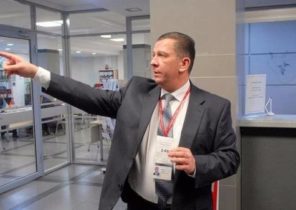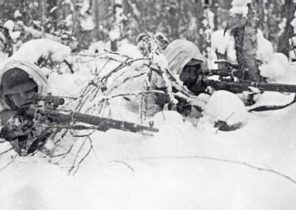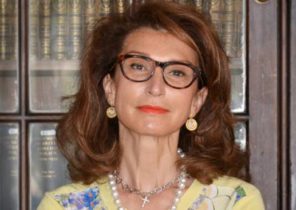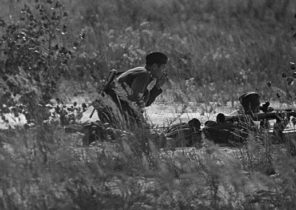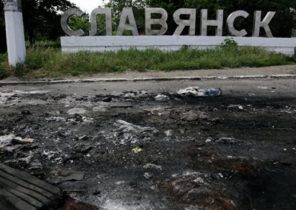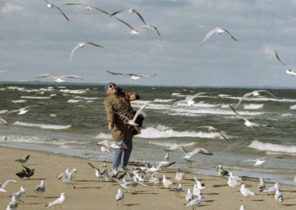
“Who doesn’t miss the Soviet Union has no heart” — the famous phrase of Russian President Vladimir Putin, which he delivered in 2010. But he quickly added: “And who wants to restore it has no head.”
Mr Putin usually does not act as a prudent cost-savvy master. However, we observed the 25th anniversary of the collapse of the Soviet Union, and his famous saying summed up the increasingly obvious results of the epic historical experiment. To put this experiment, first take two of the authoritarian regime, settled in Moscow: one of a growing state-managed socialism, the other a puppet of capitalism. Then put them both a series of shocks: low oil prices, costly adventures abroad, the confrontation with the West and stagnation in the economy. And then wait a few years to see what the regime will survive.
When the Soviet Union in the mid-1980s began to suffer from all these problems, it quickly fell apart. But, faced with very similar situation today the government of Mr. Putin survived — and even flourished. The difference first of all is loyalty to Mr Putin’s conservative fiscal and monetary policy coupled with the ability of authoritarian regime to impose austerity measures without consulting the people.
To understand the different fate of today’s Russia and its Soviet predecessor, we must begin with an accurate assessment of what led the Soviet Union to collapse. Representatives of the West now tend to explain the demise of the Soviet Union that a centrally planned economy simply does not work. But it is only partly true.
Soviet communism was scattered resources, stifled innovation and spit on consumers. But Central planning has one huge advantage: it provided the needs of the elite of the Communist party, especially creating her the second-largest army in the world and a frightening nuclear Arsenal. For the normal working of the factory this may not seem a bargain, but absolutely satisfied with the party elite.
When Mikhail Gorbachev came to power in 1985, few expected any dramatic changes. Indeed, the growth of the Soviet Union has declined since the postwar economic explosion, but the budget was balanced, the industry has worked, and consumers are grumbling, but not too much.
However, in just four years, stagnation has turned into a crisis. By 1989, the Kremlin budget deficit reached 10% of GDP. To force the Soviet Union to rise again, as rightly understood Mr. Gorbachev, it was necessary to stimulate economic efficiency. However, Stalin’s industrialization has led to the fact that the groups who actually profited most from inefficiency, just had the political influence to resist change. Heavy industry and the Soviet military-industrial complex is largely funded by government subsidies. Soviet collective farms, constantly posing the results are far below international standards, demanding more state subsidies for the purchase of excess fertilizers and tractors. But to cut government handouts to the Industrialists and the peasants was almost impossible: they were groups dominant in the Communist party.
Stalin, the architect of this system, coped with a weak resistance groups, economic interests due to its location to execute “enemies of the people” by the thousands. Mr. Gorbachev has not been configured to use the firing squad as a tool for economic stimulation. Instead he has made tax cuts and promised a package of subsidies to large industry and agriculture in exchange for support for his market-oriented reforms.
It was a gamble: Mr. Gorbachev relied on the fact that the pullback of the system of Central planning, coupled with the sparingly funded by the easing of fiscal policy can serve as an impetus to growth. But due to the fact that the Soviet Union had only limited access to debt markets, spending over budget it covers by printing the money. When the stock of money rose sharply, the value of the ruble fell. Because until now, prices were controlled administratively, they are unable to adapt to the new monetary conditions. Markets suspended the clearing, and as a result has identified all problem areas and deficiencies. By the end of the 1980s, inhabitants of the Soviet Union had to stand in long queues for milk and bread. Any company that had access to the black market, started selling there. Since 1989 the economy has plunged into recession, while prices even on the black market skyrocketed. By 1991 the economy had collapsed and the Kremlin lost control over taxes and spending. The Soviet Union was on the verge of death.
In the late 1980s, when the Soviet Union began to fade, Vladimir Putin was a KGB agent in Dresden, East Germany. Mr Putin suffered from the fall of the Soviet Empire in the first place and vowed that such a catastrophe will never happen. The main lesson he learned was simple: avoid large deficits and high inflation.
From the moment he came to power in 1999, Mr Putin carefully followed conservative macroeconomic policies. This allowed him to withstand the crisis, which, in the opinion of many, was to topple his regime. In mid-2014, oil prices began to fall, and the West rained down on Russia’s financial sanctions over the invasion of Ukraine. But Mr. Putin still won.
A situation when the Soviet Union began to suffer from a growing budget deficit fueled by the production of new money, the current Russia has coped thanks to an aggressive program of austerity that has hit the social payments and pensions to balance the budget. The Bank of Russia raised interest rates to double digits, reducing inflation to 6 percent, a decent figure for a country with a developing market. The budget deficit, the Kremlin will be slightly more than 3% of GDP this year, even despite the fact that oil, which had previously provided half of government revenues, is now sold at a price half lower than two years ago. And Russia’s sovereign debt remains less than 20% of GDP, according to government statistics. For comparison, America’s debt is more than 75% of GDP, according to the Federal reserve.
Such conservative measures in the fiscal sphere help explain why, unlike the USSR, Russia and Mr Putin showed himself to be unexpectedly stable. Despite the financial sanctions, major Russian companies continue to attract foreign resources for their needs. Despite the commodity collapse, Russian oil production is on the post-Soviet level. The Russian economy returns to growth, but the Russian military fighting in Ukraine and Syria. The Kremlin has mobilized all resources to consolidate power at home and abroad, even in circumstances such as those that ravaged the Soviet Union.
Of course, overestimate the economic achievements of Russia are not worth it. Mr Putin confiscates the property of their rivals, turns a blind eye to comprehensive corruption and draws investors to flee. The Russian government plays a much bigger role in the economy now than it was before the arrival of Putin to power, and not to provide benefits to society, e.g. in health or education, and to monopolize the production of oil and patronize their organizations. Russian salaries grew rapidly in the 2000s, but since their growth is greatly slowed, if not turned negative.
However, although economic issues are important for the survival of the regime of Mr. Putin, they — not the main. Macroeconomic stability guaranteed half a decade of relative prosperity. Anniversary of the fall of the Soviet Union will be widely celebrated in Russia. The collapse of the USSR is a period in life that most Russians would prefer to forget, and the catastrophe, which Mr. Putin has decided not to give again.
Dr. Miller is assistant head of Programmes Brady-Johnson in the framework of the Grand strategy at Yale University and author of “the Fight to save the Soviet economy Mikhail Gorbachev and the collapse of the Soviet Union” (Publishing house of the University of North Carolina).
